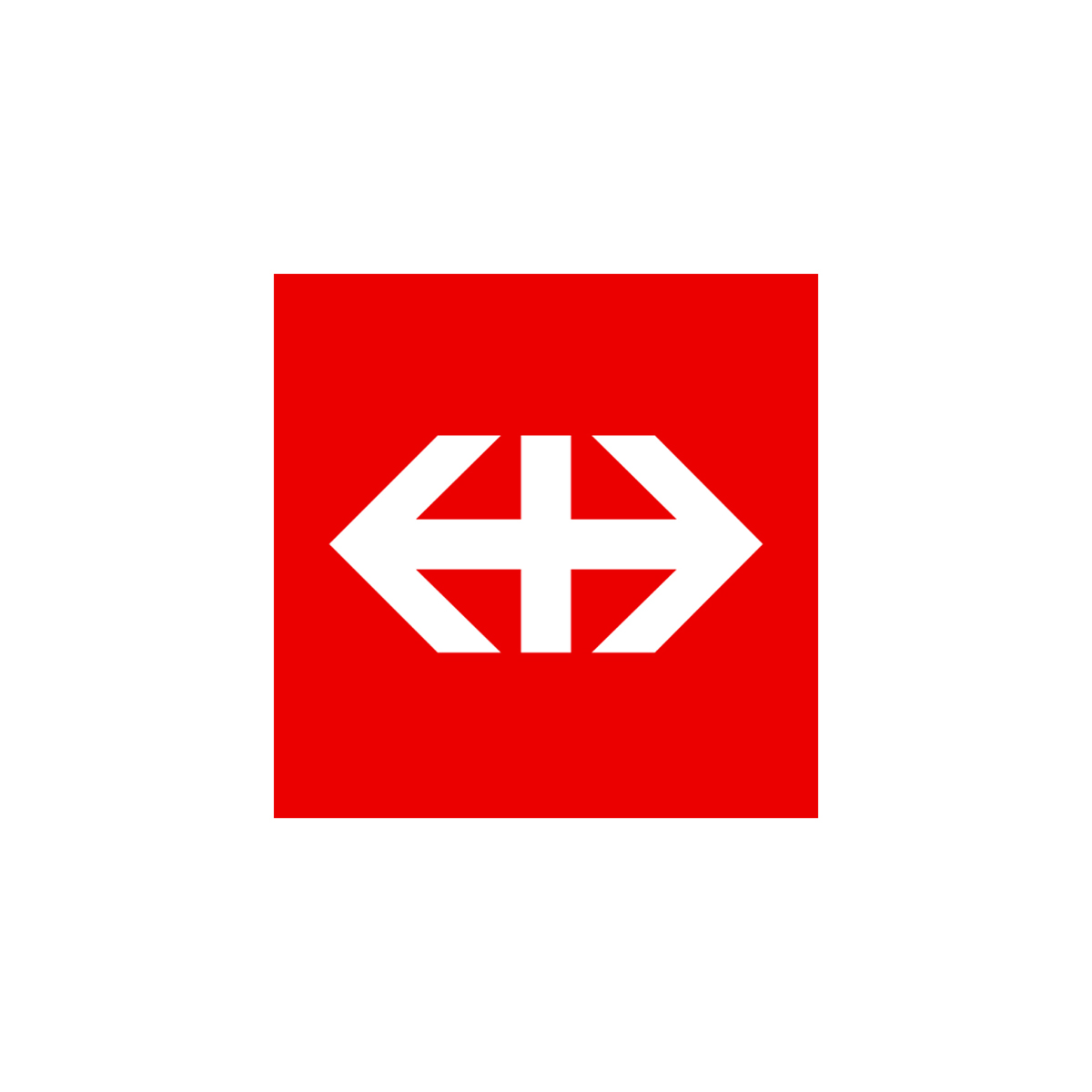Across Switzerland
Hans Hartman's 1972 logo for Swiss Federal Railways.
This post is supported by LogoArchive – The home of historical logos. Discover over 4500 of history’s greatest designs from the world’s finest designers. Always find the logo inspiration you need for your next project. Start here.
By the 1970s, just like rail networks across Europe (British Rail, Nederlandse Spoorwegen), Swiss Federal Railways (SBB) was facing a range of challenges, from growing private car ownership to the increasing complexity of its network. Adding to this pressure was the reality that SBB shared the national railway system with over a 100 private railways adding to potential confusion and competition. It was felt that a clearer identity, one that would distinguish SBB from other services and position it as a modernised and reliable transport option (reflecting investment in new infrastructure) was essential to its future growth.
With these requirements in mind, in 1978 SBB engaged the advertising and design agency of Muller-Brockmann + Co. to develop a standardised signage system that would cover all its railway stations and stops throughout the country, and establish the necessary framework for an overall visual image that would be associated with SBB going forward.
Working with the building construction branch of SBB General Management, Müller-Brockmann and Peter Spalinger would create a design handbook to serve as guidance. The initial design phase would include the selection of a typeface and design of pictograms, and the governing principles of shape and colour to inform the development of signage that would be used to convey information and guide passengers around busy and complex environments.
Ahead of this major effort, and with the intention of helping to identify SBB, in 1972 a new logo would be require to connect the fleet of vehicles and rolling stock with stations and buildings throughout the network. This would be designed by renowned Swiss designer Hans Hartmann.



